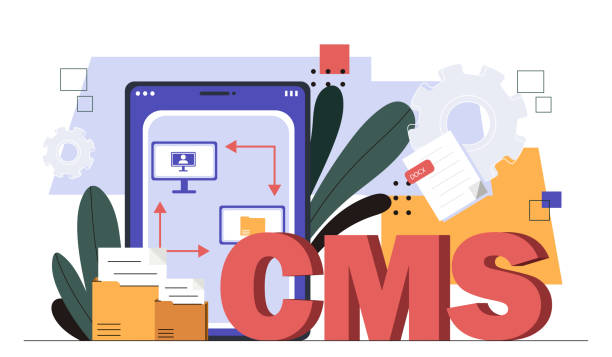Why Is Responsive Design Important in Web Development?

Why Responsive Design is Non-Negotiable in Modern Web Development?
In an era where digital interactions define our daily lives, the way we access and consume information online has undergone a dramatic transformation. Gone are the days when a static desktop website was sufficient to engage an audience. Today, users flick between smartphones, tablets, laptops, and even smart TVs, expecting a seamless, intuitive experience across every single device. This omnipresent, multi-device usage isn’t just a trend; it’s the fundamental reality of our digital world.
At the heart of addressing this complex landscape lies Responsive Design. More than just a buzzword, it represents a foundational approach to web development that ensures websites adapt gracefully to the varied screen sizes and capabilities of the devices used to access them. It’s about creating a single, versatile website that can bend and flex, rather than breaking under the pressure of countless viewports. But why is this adaptability not merely a nice-to-have, but an absolute necessity for any serious online presence? Let’s delve deep into the critical importance of responsive design.
The Evolution of Web Access: A Device-Driven World
To truly grasp the significance of responsive design, we must first look at how we got here. For many years, the internet was primarily accessed via desktop computers with large monitors. Websites were designed with fixed layouts, pixels, and dimensions, assuming a relatively consistent viewing environment.
However, the advent of the smartphone in the late 2000s, followed by tablets, introduced a seismic shift. Suddenly, users were browsing on screens that were significantly smaller, with touch interfaces, and often on the go. This fragmented the web experience: a desktop site, when viewed on a phone, often required incessant pinching, zooming, and horizontal scrolling – a frustrating and inefficient ordeal.
Today, the statistics paint a clear picture:
- Mobile dominates: Over half of all global website traffic now originates from mobile devices. (Source: Statista)
- Multi-device ownership: The average user owns multiple internet-connected devices, frequently switching between them throughout the day.
- User expectation: Users expect content to be immediately accessible and perfectly formatted, regardless of their chosen device. Any friction can lead to abandonment.
This evolution has made it clear: if your website isn’t prepared for the multi-device world, it’s not prepared for your audience.
What Exactly is Responsive Design?
At its core, Responsive Design is an approach to web development that aims to provide an optimal viewing and interaction experience—easy reading and navigation with a minimum of resizing, panning, and scrolling—across a wide range of devices.
It achieves this through a specific set of technical practices:
- Fluid Grids: Instead of fixed pixel widths, responsive layouts use percentage-based widths or modern CSS Grid/Flexbox layouts. This allows elements to stretch or shrink proportionally to the screen size.
- Flexible Images and Media: Images and videos are scaled using relative units (like percentages) to ensure they never overflow their containing elements, preventing horizontal scrolling and maintaining visual integrity.
- Media Queries: These are the “brains” of responsive design. Media queries allow developers to apply different CSS styles based on device characteristics, such as screen width, height, resolution, and orientation. This means a website can look one way on a desktop, and an entirely different way (e.g., stacked columns instead of side-by-side, smaller fonts, reorganised navigation) on a mobile device.
- Flexible Content: Text, forms, and other content elements also adapt, ensuring readability and usability.
- Viewport Meta Tag: This crucial HTML tag instructs the browser on how to control the page’s dimensions and scaling, ensuring it renders at the device’s width rather than a zoomed-out desktop view.
While often confused with “adaptive design,” responsive design typically refers to a single, fluid layout that adjusts continuously, whereas adaptive design often involves serving entirely different, fixed layouts based on specific, predefined breakpoints. Responsive design is generally preferred for its fluidity and future-proofing.
Why Responsive Design is Imperative: The Core Benefits
The advantages of adopting a Responsive Design strategy in web development extend far beyond mere aesthetics. They impact every facet of a website’s success, from audience engagement to business profitability.
1. Superior User Experience (UX)
First and foremost, responsive design is about the user. A website that adapts to the user’s device provides a seamless and intuitive experience, no matter how they choose to access it.
- No More Pinching and Zooming: Users don’t have to strain their eyes or awkwardly manipulate the screen to read text or click buttons. Content is presented clearly and legibly.
- Consistent Navigation: Menus and navigation elements adapt to be easily tappable on touchscreens, often collapsing into “hamburger” menus on smaller devices, providing a familiar and accessible interface.
- Reduced Bounce Rates: When visitors encounter a site that’s difficult to use on their device, they quickly leave (bounce). A responsive site mitigates this frustration, encouraging visitors to stay longer and explore more.
- Increased Engagement and Conversions: A positive user experience directly correlates with higher engagement. If users can easily find information, complete forms, or make purchases, they are far more likely to convert into leads or customers.
- Enhanced Accessibility: Responsive design inherently improves accessibility for a broader audience, including those with varying display needs or using assistive technologies.
As Ethan Marcotte, often credited with coining the term “responsive web design,” succinctly puts it:
“Rather than tailoring disconnected designs to each of an ever-increasing number of web devices, we can treat them as facets of the same experience.”
This singular, unified experience is paramount for modern users.
2. Enhanced SEO (Search Engine Optimization)
Perhaps one of the most compelling reasons for businesses to embrace Responsive Design is its profound impact on Search Engine Optimization (SEO). Google, the dominant search engine, explicitly champions responsive design.
- Google’s Mobile-First Indexing: In 2018, Google rolled out mobile-first indexing, meaning its algorithms primarily use the mobile version of a website’s content for indexing and ranking. If your mobile site (or the mobile view of your responsive site) offers a poor experience or lacks content present on the desktop version, your search rankings will suffer. A responsive site ensures content consistency across all versions.
- Improved Site Speed: While not directly a feature of responsive design, the methodology often encourages developers to optimize images and leverage techniques like lazy loading, which can lead to faster load times on mobile devices. Site speed is a confirmed ranking factor for Google.
- Single URL, Simplified Indexing: A responsive website uses a single URL for all devices. This significantly simplifies Google’s crawling and indexing process, as opposed to managing separate mobile URLs (e.g.,
m.example.com) which can lead to duplicate content issues and require complex redirect schemes. Google itself recommends responsive design as the preferred configuration. - Reduced Errors: Managing a single responsive site typically results in fewer common SEO errors related to separate mobile sites, such as incorrect redirects, canonical tags, or different content versions.
Google’s stance on this is unequivocal. John Mueller, a Webmaster Trends Analyst at Google, has frequently emphasized:
“Having a responsive site is generally the best way to go, not just for mobile-first indexing, but also for users.”
This highlights that Google’s preferences align with user preferences, making responsive design a win-win for both search visibility and user satisfaction.
3. Cost-Effectiveness and Maintainability
From a web development perspective, responsive design offers significant long-term cost benefits and simplifies maintenance.
- One Codebase to Rule Them All: Instead of developing and maintaining separate websites for desktop and mobile (each with its own HTML, CSS, JavaScript, and content management system), responsive design uses a single set of files. This drastically reduces development time and effort.
- Simplified Updates and Bug Fixes: When an update or bug fix is needed, it only has to be implemented once. This saves countless hours and prevents inconsistencies that can arise when managing multiple versions of a site.
- Reduced Testing Overhead: While thorough testing is still crucial, the process is streamlined when you’re testing one codebase across various viewports, rather than entirely separate sites.
- Lower Hosting Costs: A single website generally means simpler hosting requirements compared to managing multiple distinct sites.
Over the lifespan of a website, these efficiencies translate into substantial savings on development, maintenance, and operational costs.
4. Future-Proofing for Emerging Devices
The technological landscape is constantly evolving, with new devices and screen sizes emerging regularly. Responsive design, by its very nature, is designed to be adaptable.
- Adapts to the Unknown: Instead of designing for a fixed set of current devices, responsive design principles allow a website to gracefully adjust to screens of varying dimensions that might not even exist yet. This ensures the longevity and relevance of your website.
- Fluidity by Design: By using fluid grids and flexible media, your site is inherently prepared for smaller smartwatches, larger smart TVs, or any intermediate screen size that may become popular in the future.
Investing in responsive design today means investing in a website that won’t become obsolete with the next big wave of hardware innovation.
5. Improved Brand Reputation and Credibility
In today’s competitive digital marketplace, your website is often the first impression a potential customer has of your business. A poorly optimized, non-responsive site can severely damage that impression.
- Professionalism and Trust: A website that looks and functions perfectly on any device conveys professionalism, attention to detail, and a commitment to user experience. This builds trust and enhances your brand’s credibility.
- Avoid Customer Frustration: A frustrating user experience can quickly lead to negative perceptions of your brand. Consumers expect convenience, and a responsive site delivers on that expectation.
- Competitive Advantage: While responsive design is becoming the standard, many businesses still lag. Having a superior mobile experience can provide a significant competitive edge, especially in industries where mobile research and purchasing are prevalent.
A well-executed responsive design is a testament to a forward-thinking, customer-centric business.
The Technical Pillars of Responsive Design (with Code Examples)
Understanding the “why” is crucial, but knowing a bit about the “how” illuminates the elegance and power of Responsive Design in Web Development. Let’s look at the key technical components.
1. Fluid Grids (Percentage-based Layouts and Flexbox/CSS Grid)
The foundation of a responsive layout is its ability to stretch and shrink. This move away from fixed-pixel widths is achieved using relative units.
Traditional (Non-Responsive):
.container {
width: 960px; /* Fixed width */
margin: 0 auto;
}
.column {
width: 300px; /* Fixed width */
float: left;
margin-right: 20px;
}
Responsive (Percentage-based):
.container {
width: 90%; /* Fluid width */
max-width: 1200px; /* Prevents it from getting too wide on large screens */
margin: 0 auto;
}
.column {
width: 31.33%; /* Fluid width (e.g., for 3 columns with gaps) */
float: left;
margin-right: 2%; /* Fluid margin */
}
.column:last-child {
margin-right: 0;
}
Modern Responsive (Flexbox – a more robust and flexible solution): Flexbox allows items in a container to be arranged and distribute space automatically.
.container {
display: flex; /* Makes the container a flex container */
flex-wrap: wrap; /* Allows items to wrap to the next line */
gap: 20px; /* Space between items */
max-width: 1200px;
margin: 0 auto;
}
.column {
flex: 1 1 calc(33.33% - 20px); /* Allows columns to grow/shrink, with a base width of 33.33% minus gap */
min-width: 280px; /* Ensures columns don't get too small before wrapping */
}
CSS Grid is another powerful modern layout system, excellent for two-dimensional layouts, offering even greater control over responsive structures.
2. Flexible Images and Media
Images and videos are often the biggest culprits of breaking layouts on smaller screens. Making them flexible ensures they scale within their containers.
CSS for Flexible Images:
img {
max-width: 100%; /* Ensures image never overflows its parent container */
height: auto; /* Maintains aspect ratio */
display: block; /* Removes extra space below images */
}
/* For videos (e.g., embedded YouTube/Vimeo) */
video, embed, iframe, object {
max-width: 100%;
height: auto;
}
HTML srcset and <picture> for Optimized Images: For true image responsiveness, where different image sizes or even different images are served based on the device, srcset and the <picture> element are invaluable.
<!-- srcset for different resolutions -->
<img srcset="image-small.jpg 480w,
image-medium.jpg 800w,
image-large.jpg 1200w"
sizes="(max-width: 600px) 480px,
(max-width: 900px) 800px,
1200px"
src="image-large.jpg"
alt="A descriptive image alt text">
<!-- <picture> for art direction (serving different images based on screen size) -->
<picture>
<source media="(min-width: 900px)" srcset="large-hero.jpg">
<source media="(min-width: 600px)" srcset="medium-hero.jpg">
<img src="small-hero.jpg" alt="A responsive hero image">
</picture>
3. Media Queries
Media queries are the cornerstone of responsive design, allowing conditional application of CSS styles based on device characteristics.
Basic Syntax:
/* Default styles for all devices (often mobile-first) */
body {
font-size: 16px;
line-height: 1.5;
}
.navigation {
/* Mobile-friendly navigation */
display: block; /* Stacks vertically */
}
/* Styles for screens wider than 768px (e.g., tablets and desktops) */
@media screen and (min-width: 768px) {
body {
font-size: 18px; /* Larger font for bigger screens */
}
.navigation {
display: flex; /* Horizontal navigation */
justify-content: space-around;
}
.column {
width: 48%; /* Adjusting column width for two columns */
float: left;
margin-right: 4%;
}
.column:nth-child(2n) {
margin-right: 0;
}
}
/* Styles for screens wider than 1200px (e.g., large desktops) */
@media screen and (min-width: 1200px) {
body {
max-width: 1400px;
margin: 0 auto;
}
.column {
width: 31.33%; /* Three columns */
margin-right: 3%;
}
.column:nth-child(3n) {
margin-right: 0;
}
}
Common breakpoints often target mobile (up to 767px), tablet (768px to ~1023px), and desktop (above ~1024px), though these are flexible and should be chosen based on content, not arbitrary device sizes.
4. Viewport Meta Tag
This small but mighty HTML tag is absolutely essential for responsive rendering. Without it, mobile browsers might render your page at a desktop width and then zoom out, defeating the purpose of your responsive CSS.
<!DOCTYPE html>
<html lang="en">
<head>
<meta charset="UTF-8">
<meta name="viewport" content="width=device-width, initial-scale=1.0">
<title>My Responsive Website</title>
<!-- Other meta tags, CSS links, etc. -->
</head>
<body>
<!-- Your website content -->
</body>
</html>
width=device-width: Instructs the browser to set the viewport width to the device’s actual width.initial-scale=1.0: Sets the initial zoom level when the page is first loaded.
5. Mobile-First Approach
While not a technical component in isolation, the mobile-first approach is a crucial philosophy for successful responsive design. Instead of designing for desktop and then scaling down, you design for the smallest screen first, and then progressively enhance for larger screens.
Benefits:
- Performance: Forces developers to prioritize essential content and optimize assets from the outset, leading to faster load times on mobile devices.
- Content Focus: Ensures that the core message and functionality are preserved even on the most constrained screens.
- Easier Scaling Up: It’s generally easier to add complexity, features, and larger layouts as screen real estate increases, rather than trying to remove or simplify features for smaller screens.
This iterative process of building up from mobile ensures that the most critical user journeys are robust and performant.
Challenges and Considerations
While the benefits of Responsive Design are undeniable, its implementation in web development is not without its challenges:
- Performance Optimization: Large images, complex JavaScript, or too many web fonts can still slow down a responsive site, especially on mobile networks. Careful optimization (image compression, lazy loading, code splitting) is crucial.
- Content Prioritization: Deciding what content is most important and how it should be presented on smaller screens requires careful planning and often involves compromises.
- Testing Complexity: Ensuring a site functions perfectly across a myriad of devices, operating systems, and browser combinations can be time-consuming. Tools like browser developer consoles (“responsive mode”) and real device testing are essential.
- Design Complexity: Designing for fluidity requires a different mindset than fixed layouts. It demands a thorough understanding of how elements will reflow and interact at various breakpoints.
- Legacy Content: Integrating older, non-responsive content or third-party widgets into a responsive framework can sometimes be challenging.
Despite these challenges, the effort invested in overcoming them is far outweighed by the long-term benefits of a flexible, future-proof website.
Responsive Design vs. Dedicated Mobile Site vs. Adaptive Design
To further clarify why Responsive Design is the current best practice in web development, let’s compare it to its alternatives:
| Feature | Responsive Design | Dedicated Mobile Site (m.domain.com) | Adaptive Design |
|---|---|---|---|
| URLs | Single URL (e.g., example.com) |
Two separate URLs (example.com, m.example.com) |
Single URL (server-side detection) |
| Codebase | One unified codebase | Two completely separate codebases | Multiple codebases/templates for specific breakpoints |
| Maintenance | Easiest; one update affects all | Most complex; two updates needed, potential for inconsistencies | Complex; multiple layouts to manage |
| Flexibility | Highly flexible, fluidly adapts to any screen size | Less flexible; fixed breakpoints for mobile | Fixed breakpoints; serves one of several predefined layouts |
| SEO Impact | Optimal; Google’s preferred method, no duplicate content issues | Potential SEO issues (duplicate content, redirection errors, diluted link equity) | Good, but complex server logic can introduce issues; requires careful implementation |
| Development Cost | Moderate initial, lower long-term | Higher initial and long-term costs | Higher initial; moderate long-term (more than responsive) |
| User Experience | Seamless, consistent across all devices | Can be inconsistent if not carefully matched; potential for redirection delays | Good for predefined devices; less fluid for intermediate sizes |
| Focus | Fluid adaptation to device capabilities | Device-specific content/layout often for simplified mobile experience | Serving specific, optimized layouts for known devices |
| Future-Proofing | Excellent; adapts to unknown devices | Poor; requires new sites for new devices | Limited; requires new layouts for new breakpoints |
This comparison clearly illustrates why responsive design has emerged as the industry standard, offering the best balance of user experience, SEO benefits, and long-term maintainability.
Expert Perspectives
The importance of responsive design isn’t just a technical opinion; it’s a consensus among industry leaders and organizations:
“The future of web development is not about building for a specific device, but for all devices. Responsive design is the framework that allows us to achieve this fluid, adaptable future.” – A leading figure in digital design and strategy.
Google has solidified its stance through official recommendations and algorithm updates:
“Google recommends responsive web design because it has one URL and one HTML code (for all devices), which makes it easier, more efficient for Google to crawl, index, and organize content. It also helps Google’s algorithms accurately assign indexing properties to the page.” – Google Developers Documentation.
These endorsements underscore that responsive design is not just a trend but a fundamental shift in how we approach building for the web.
Conclusion
In today’s multi-device universe, the question is no longer if your website needs to be adaptable, but how it will achieve that adaptability. Responsive Design provides the most robust, efficient, and user-friendly answer. It’s an investment that pays dividends in user satisfaction, search engine visibility, operational efficiency, and long-term brand credibility.
By embracing fluid layouts, flexible media, and the power of media queries, web developers can craft digital experiences that are not only beautiful but also intelligent and resilient. A responsive website isn’t just about looking good on a phone; it’s about delivering an optimal experience, consistently, to every user, on every device, every single time. As the digital landscape continues its relentless evolution, responsive design remains the essential pillar for building a future-proof web presence. It is, unequivocally, the imperative for modern web development.





